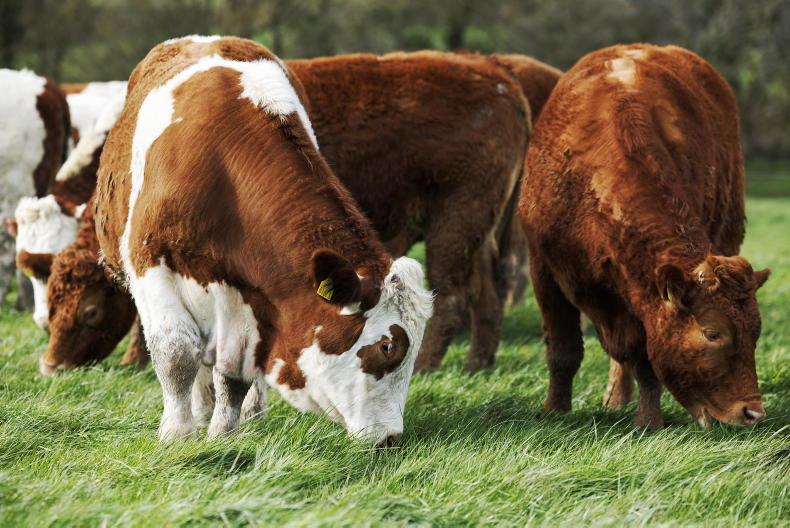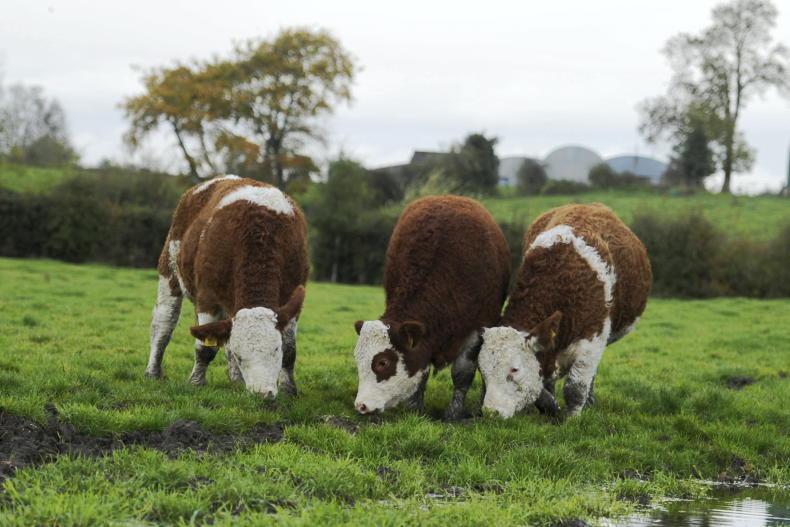It was a real shock to the system how quickly ground conditions deteriorated at the start of March. Although the improvement is slower at the minute, it is still rapidly changing, with many farmers noting the impact one or two good days alone can have on drying out wet soils.
For stock that had to go back inside for the past number of weeks, it will help release the pressure valve on housing now that sward conditions are coming back on track.
Growth has really lifted in the past fortnight or so, with this predicted to only continue rising rapidly. Supply, therefore, should not be a major issue.
Where a pinch point may come in grass supply is in delaying fertiliser application. Although fertiliser prices continue to drop, any value gained from a reduced purchase price can easily be lost in production.
Spring calving cows will be reaching their peak milk yield soon, as well as this month being the last heat cycle for herds beginning breeding in May. A pinch in grass supplies now or in a number of weeks when cows are being served will wipe out a saving of a few hundred euro saved on a fertiliser bill.
Niall O’Meara – Killimor, Co Galway
Half of the farm received 25 units of urea/acre last Friday. These paddocks had received slurry earlier on in the year.
The remainder of the farm has received no fertiliser, chemical or organic. What’s left in the slurry tanks will be direct injected in to this ground in the next two weeks or so.
Cows have been turned back out again after having to be rehoused due to the wet weather.
Autumn born calves had been given access from the shed to paddocks for grazing 24/7.
They have gone from suckling freely to being suckled twice a day, which will be finally reduced down to once a day in preparation for weaning.
System Suckler to weaning
Soil type Variable
Farm cover (kg/DM/ha) 782
Growth (kg/DM/ha/day) 50
Demand (kg/DM/ha/day) 21
Stephen Frend – Newford Suckler Farm, Co Galway
Cows are back out grazing again, although Tuesday night’s rain made conditions a little soft underfoot.
Cows are grazing off some silage ground at the minute, which we are hopeful of getting closed up by 12 April. This will be targeted as dry cow silage.
We have about 65% of the first round grazed, and with the yearling cattle being turned out tomorrow (Thursday), we hope to get this grazed off within a week or 10 days.
We will spread half a bag of urea next week to top up swards.
We now have the cows bolused and vaccinated in preparation for breeding, with tail paint applied and heats being recorded since Monday.
System Suckler to finishing
Soil type Variable
Farm cover (kg/DM/ha) 568
Growth (kg/DM/ha/day) 16
Demand (kg/DM/ha/day) 28
Ellen Fitzpatrick – Teagasc Johnstown Castle, Co Wexford
Stock have been turned out again, after being rehoused for the past three weeks. Luckily we had 65% of the first round grazed in February and early March, which was enough to put us in a good position.
We will finish out the first round in the next week or two, with the first paddocks grazed in February earmarked for silage.
Silage ground had received half a bag of urea/acre and will be topped up with one bag urea/acre, with an additional 2,500 gallons slurry/acre applied by trailing shoe for the P and K requirements.
The grazing block received 20kg N in February, with another 20kg due to be applied in the coming week.
System Dairy calf to beef
Soil type Free draining
Farm cover (kg/DM/ha) 1,016
Growth (kg/DM/ha/day) 15
Demand (kg/DM/ha/day) 30










SHARING OPTIONS